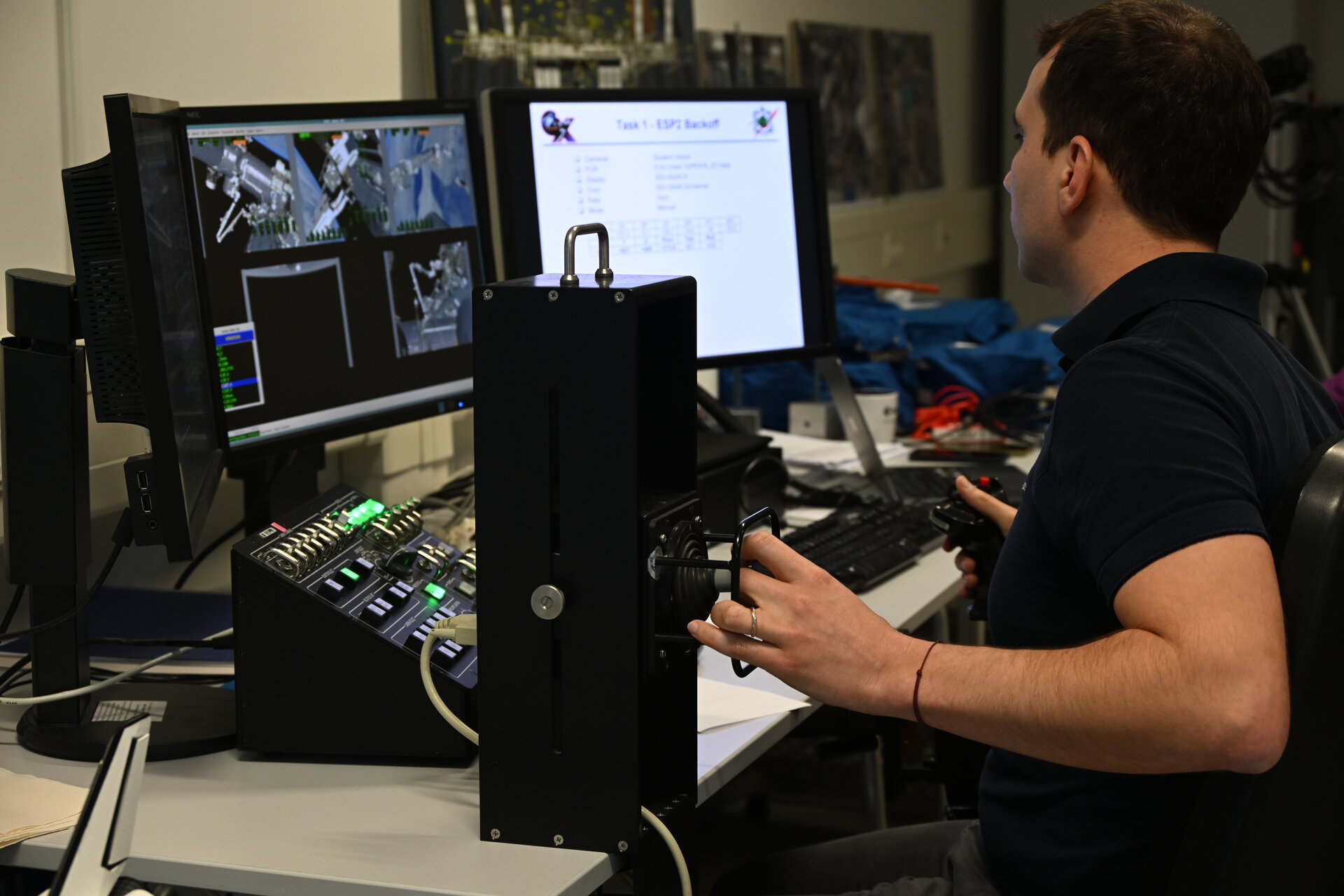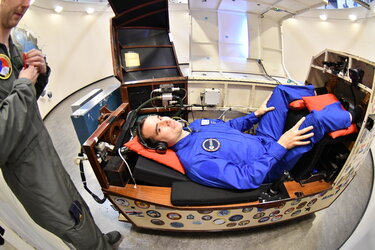

Rocking robotics training
ESA astronaut candidate Raphaël Liégeois from Belgium during a robotics session as part of his basic astronaut training at ESA’s European Astronaut Centre, near Cologne, Germany.
The first building block of International Space Station robotics training in the curriculum of ESA’s 2022 astronaut candidate class is called GRAVI-T training.
During this session, they delve into generic robotic training, focusing on learning how to manipulate the Canadarm2 robotic arm.
Robotic arms on the Station are used to grab and berth cargo vessels such as Japan’s HTV and the Northrop Grumman’s Cygnus. They can also help astronauts during spacewalks by moving an astronaut strapped to the end of the arm to hard-to-reach places on the outside of the International Space Station. It can even replace a spacewalk altogether.
Under the supervision of instructors at the Astronaut Centre, the candidates use the Dynamic Skills Trainer, a console training tool, to operate the robotic arm within a simulated environment.
In addition, the astronaut candidates undergo virtual reality sessions to gain a better understanding of the 17-metre-long robotic arm's operations aboard the Station.
"I really enjoyed practicing manipulation techniques of the robotic arm in a setting very similar to that of the International Space Station", says Raphaël.
ESA’s newest class of astronauts, including Sophie Adenot, Rosemary Coogan, Pablo Álvarez Fernández, Marco Sieber, and Raphaël, commenced basic astronaut training in April 2023. The group was selected in November 2022.
The one-year training provides an overall familiarisation and training in various areas, such as spacecraft systems, spacewalking, flight engineering, robotics and life support systems. They go through survival and medical training before receiving ESA astronaut certification in spring this year.
After certification, they will move on to the next phases of pre-assignment and mission-specific training, paving the way for future missions to the International Space Station and beyond.
Learn more about Raphaël and his training by listening to his ESA Explores podcast episode here.





